Talk with our local travel specialist who can help organize your trip.
Trekking in Nepal - Ultimate Guide for all Trekkers
Trekking is an outdoor activity undertaken to explore nature while traveling to a destination on foot. Trekking in Nepal has become a popular activity over the decades due to the growing popularity of internal and external tourism. As people want to get away from the hustle and bustle of the hectic city life, trekking to distinct and remote trails has become a recluse by leaving behind the distractions of modern life. Amidst the numerous benefits of trekking, visiting a new place is the best.
The Himalayan country of Nepal, located in South-Eastern Asia cocooned between landmasses, offers a wide range of climates and topographies, making it the best place to go for trekking. Trekking in Nepal began officially during the 1860s when Colonel Jimmy Roberts organized the first commercial trek leading the industry to boom in a couple of years. Backpackers have since experienced that Nepal has a lot to offer, from unique wilderness to hills, plains, and the great Himalayas.
Trekking in Nepal is the best-chosen way to explore this beauty while getting close to nature, living to breathe, and taking in all the cultural and natural galore that it has to offer.
Table of Content
- Trekking Region In Nepal
- Type Of Trekking In Nepal
- Trekking Permits
- Trekking Difficulty
- High Altitude Sickness During The Trek
- Travel Insurance And Helicopter Rescue
- Trekking Gears And Equipment List
- Independent Trek Or Trekking With An Agency
- When To Go Trekking
- FAQ About Trekking In Nepal
- Conclusion
Trekking Region In Nepal

Nepal is a paradise for trekking enthusiasts around the world. Due to Nepal's wide variety of topography and climatic conditions, different trekking regions have amazing routes leading to wonderful viewpoints and destinations. The prominent trekking regions are as below:
Everest Region
The most famous trekking region in Nepal and perhaps the World is Everest. Everest region boasts the mighty Mt. Everest (8,848.86 m/ 29,031.7 ft), the world's tallest mountain. It covers the eastern Himalayan range of Nepal in the Mahalangur section. The Sagarmatha National Park vicinity consists of subalpine to tundra with coniferous vegetation.
Trekking in the Everest region begins after a 30 minutes flight from Kathmandu to Lukla in the northeast or a drive to the region's gateway, Jiri or Phaplu. Due to the popularity of this region, most of the trails are well established and offer classic trekking routes.
The hills of Solu, biodiversity, culturally rich Sherpa villages like Namche Bazaar, and the glorious views of 4 of the world's highest mountains make this the most sought-after trekking region. It offers a wide range of treks from short to long, like Everest Base Camp Trek, Jiri to Everest Base Camp Trek, Everest Three High Passes Trek, and more.
Annapurna Region
Annapurna Region is the second most famed trekking region in Nepal and has gained high popularity worldwide after being opened to foreigners in 1977. It is situated in the foothills and Himalayas of western Nepal. It is between three other trekking regions, namely Mustang, Dhaulagiri, and Manaslu. The most well-known gateway to trekking in this region is the city of lakes, Pokhara.
The surrounding Annapurna Sanctuary is home to the gigantic Annapurna massif and other highest mountains in the world like Mt. Dhaulagiri and the appealing Mt. Macchapucchre. In the foothills of the Annapurna range of mountains, you can spot the most beautiful villages with humble and hardworking communities like the ethnic Gurung, Thakali, Chettri tribes. The beauty of the Annapurna region is that you can immerse yourself in culture, adventure sports, and nature walks.
Annapurna region boasts the widest variety of treks taking you from popular trekking trails to the isolated villages from a short four-day to two weeks trek. Popular trekking trails are Annapurna Base Camp Trek, Ghorepani Poon Hill Trek, Annapurna Circuit Trek, and many others.
Manaslu Region
Manaslu region hosts some of the classic treks surrounding the world's highest mountain, Mt. Manaslu (8,163m/ 26,781ft). The region is known for its rugged and remote trails that would require special restricted area permits to enter. Sitting in the Himalayas of western Nepal close to the Langtang region, it is known for its off-beat path.
Beside the marvel of Mt. Manaslu, you get to witness the views of ten mountains over 6,500m/21,300ft. It is a larger-than-life experience of seeing the culture and traditions of Bhotia and Tibetan Buddhists inhabiting the remote villages stretching across the Budhi Gandaki river valley. The longest pass of the Himalayas in Nepal, Larkya La pass 5,106m/ 16,752ft, is also situated in this region, crossing the dream of every avid trekker. Two of the most famous treks in the area are Manaslu Circuit Trek and Manaslu Tsum Valley trek.
Langtang Region
Langtang is another popular destination nearest to the capital city, Kathmandu, with only about 140 km distance on travel by land. It is home to the Langtang range, particularly the famous and highest Langtang Lirung (7,234m/23,733 ft).
Most travelers enjoy trekking here because of the insights into ethnic Tamang heritage, unique wildlife, high mountains, and religious significance. The region is also home to one of Nepal's most revered sacred heritage sites, Gosaikunda lake. Flocks of pilgrims and tourists opt to trek there due to religious significance. It is also popular among nature enthusiasts who trek the region to study the unique biodiversity found in the Langtang National Park.
Trekking in the Langtang region is regarded as most accessible and is opted by many independent trekkers. It is easy to navigate through the trails as they are well developed. Also, there are good tea houses and lodges along the way throughout the trekking routes. Some of the popular trekking trails are Langtang Valley Trek, Gosaikunda Trek, and Tamang Heritage Trek.
Makalu Region
Makalu region lies in between the Everest region and the Kanchenjunga region in the eastern Himalayas of Nepal. Trekking in the Manaslu region offers the most off-the-beat, remote, and rural experience. The major highlight of this region is most definitely Mt. Makalu (8,463m/ 27,765ft), the world's fifth-highest peak.
The Makalu Barun national park covers the region with contrasting green hills, valleys with high waterfalls, deep gorges, and amazing biodiversity. Considering that it is not such a frequented trekking region, there aren't many tea houses in the area. The route is not as developed as the neighboring Everest region to its west.
The trekking route has some tough and rugged terrain that runs between Arun and Barun Valleys, crossing isolated villages and icy plains. Makalu Base Camp Trek, Makalu to Everest Trek, and Makalu to Kanchenjunga Trek are the best treks in the region.
Kanchenjunga Region
The Kanchenjunga region sits on eastern Nepal's rim, boasting the majestic and daunting Mt. Kanchenjunga (8,586m/28,169ft), the third-highest mountain in the world. This region is regarded to have the toughest trekking trails and is the least frequented region, making it mysterious, untouched, and exciting. Because of its remote location and lack of easy access, there aren't many tea houses and lodges, and the route is not well established. Camping has been a popular form of accommodation for trekkers to date.
The region is home to various climatic zones, from the subtropical vegetation to the crashing glaciers in the Alpine tundra. Trekking in the Kanchenjunga region gives a sheer excitement of witnessing Limb, Rai, Gurung communities, and snowy paths. Kanchenjunga Trek and Limbu Cultural Trail are the best treks.
Mustang Region
Mustang region lies just northwest of the Annapurna region and often combines with many Annapurna region treks. It is an entirely different trekking experience in this region due to the arid, almost desert-like topography and its unspoiled and protected status. The gateway to Mustang is Jomsom, a 25 minutes flight from Pokhara city or a long drive.
Mustang is known best for housing the last forbidden kingdom of Lo Manthang in Upper Mustang. A few years ago, Mustang Region came into popularity when the remote Upper Mustang opened to foreigners in 1992. The remote and mystic trek in this region requires a restricted area permit to safeguard the trekkers and conserve the culture of the Upper Mustang.
Some of the trekking highlights in this area are learning about the ancient Bon religion, Tibetan Buddhist cultures, festivals, and witnessing the beautiful Annapurna, Dhaulagiri, and Nilgiri mountains. Mustang is also home to the Thakali inhabitants living in the Kali Gandaki river valley. Upper Mustang Trek and Mustang Tiji Festival trek are the most popular treks in this region.
Dolpo Region
Dolpo region is another most remote, rural, and off-beat trekking region in Nepal, which was opened to tourism in 1989. Located in the foothills and Himalayas of mid-western Nepal, this region has remained unspoiled for the past decades. It is one of the farthest regions from Kathmandu and one of the most difficult places to reach. As one of the Restricted Areas of Nepal, a special permit is required to enter for trekking.
It welcomes trekkers worldwide to explore the ancient Bon region and Tibetan Buddhist culture displayed through the ancient Shey Gompa monastery. You get to interact with the people living in the highest settlements of Nepal in Dho Tarap valley and witness their daily traditions.
The Dhaulagiri range surrounds the region to the south and east and the vast Tibetan plateau to the north. The major highlight of the trek amidst awe-striking terrain is the beauty of the turquoise Shey Phoksundo Lake. Upper Dolpo Trek is the best trekking destination in this region.
Featured Trips
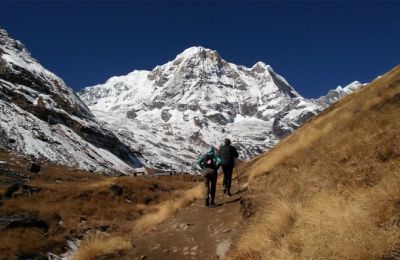
Annapurna Base Camp Trek - 11 days
Annapurna Base Camp Trek - 11 days takes you close to the world's 10th highest mountain, Annapurna I, Gurung culture, rhododendron forest, and terraced fields.
Inquire Now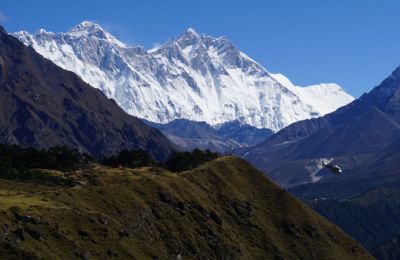
Everest Base Camp Trek - 14 days
Looking for an exciting Himalayan experience? Join us on our 14 day Everest Base Camp Trek - get ready to be stunned by breathtaking views and discover magical Nepalese cultures!
Inquire NowWhere to travel next?
Get help from our travel specialists for holiday ideas that matches your interests.
Type Of Trekking In Nepal

There are various types of trekking in Nepal based on accommodation and fooding facilities. Different regions have different types of accommodation depending upon the accessibility of transportation and popularity. Some regions have well-established routes with decent shelter facilities, while others only have the option of setting up camps. The three distinct types of trekking in Nepal as mentioned below:
Teahouse (Lodge) trekking
A teahouse is essentially a small mountain lodge falling on trekking trails with modest facilities needed to spend a night or more during the trek. These tea houses are owned and operated for commercial tourism purposes. Teahouse Trekking is where you stay in these lodges overnight instead of camping and other alternatives. Teahouse trekking is particularly famous in Everest, Annapurna, Manaslu, and Langtang regions.
Some of the major characteristics of a Teahouse are very affordable rooms with simple furniture. A low-cost tea house accommodation with a dormitory setup can cost anywhere from USD 3 to USD 5 per night, depending on the trekking region and season. Usually, these budget accommodations have two twin beds and a communal bathroom down the hall or outside the main building. If you seek an attached bathroom and other amenities, it can cost up to USD 20 as well. Warm blankets are available, but it is best to lay the sleeping bag on the bed for warmth and cleanliness. A hot shower, charging your electronic devices, and decent wifi facilities are also available with a little extra cost.
The payment for food is made separately and costs more than accommodation. Food is decent in tea houses with hot and freshly cooked local meals- rice, lentil soup, and curry. Although snacks, drinks, momos, pizza, pasta, and noodles are also available, it is best to stick with the local food to avoid falling sick from possible stale food. Food is served in a communal dining hall with a fireplace in between.
Luxury lodge accommodations are available in some popular trekking trails like Everest Base Camp, Poonhill, and more. The cornerstone of Luxury treks is combining adventure with pleasure in an unforgettable lifetime trekking experience. The lodges offer comfortable beds, room service, quality, and hygienic meals, an attached bathroom, and other amenities that you would not find in remote trekking trails.
Accommodation alone can cost you anywhere from USD 100 to beyond. Food is paid separately and consists of many cuisines. Although a luxury lodge is expensive, it is comfortable and worth it. Some of the popular Luxury treks in Nepal are Luxury Everest View Trek and Annapurna Luxury Lodge Trek.
Camping Trek
Camping is another type of trekking in Nepal that is also a popular form worldwide. Camping treks give you the experience of setting up and sleeping in tents/camps overnight for the duration of your walk. Camping treks offer an opportunity to get one with nature while sleeping under the starry sky at night and are also regarded as an ideal wilderness adventure.
It is usually applicable in long off beaten paths in more remote areas of Nepal where lodge facility is difficult to find. Cooking utensils, burners, and other camping gear are carried and set up every night during this trek. Camps/tents are set up in vantage points, plain terrain, possibly pasture land. To date, it is considered the best way for trekking in remote Himalayan regions.
Nepal's most popular camping treks are Makalu Base Camp Trek, Limi Valley Trek, and Upper Dolpo treks.
Homestay Trekking
Nepal is known for its nature and rich culture, traditions, and religion, aptly reflected in homestay treks. Homestay trek allows staying overnight in the traditional homes of locals living in the area that you are trekking. It offers a chance to stay in the local family home, share meals with them and experience warm hospitality. Meals are decent and made with local produce, and the rooms have some furniture with a bed or two in a single room. The highlight of this kind of trek is the warmth of the Nepali people and their hospitality.
Sharing accommodation lets you understand the families even better and thus heightens your trekking experience. It is also a low-budget trek but is a great opportunity to generate income for the locals in different parts of Nepal. It is a perfect way to first-hand experience and adopts the host's lifestyle, traditions, and culture.
Nepal's most popular homestay trekking is Ghale Gaon trek, Sirubari Village trek, Tamang heritage trek, and Tsum Valley trek.
Trekking In Nepal By Routes
The topography of Nepal varies between hills, plains, and Himalayan terrain. Due to this, some destinations are easily reached with accessible routes, while others remain difficult to reach to date. Also, depending upon the popularity of the trek, many trails have been developed over the years. Hence, based on routes, there are three distinct types of treks that you can take in Nepal:
Classic Trek
Classic treks are those treks that are well-established routes that many tourists have frequented over the years. These are popular trekking paths, mostly found in Everest and Annapurna regions. Every trekker's dream is to set foot in the trail, followed by Sir Edmund Hillary, the first person to acclaim Mt. Everest. For this particular region, the classic Jiri to Everest Base Camp trek is so famous.
However, over the years, with the establishment of Tenzing Hillary Airport in Lukla, the current Everest Base Camp trek with starting point Lukla has come into popularity. Annapurna Circuit Trek is another such classic trek that takes you around the Annapurna massif. It is one of the most frequented trekking trails. Langtang Valley trek has also been on trekkers' radar for ages now; hence, it has gained popularity over the years as a classic trekking route.
Off-the-beaten Trek
Off-the-beat treks have tough terrain, undeveloped trails in remote and rural areas of Nepal. The beauty of these routes is that it is unfrequented and isolated, so you get the silent path all to yourself without the distractions of modern materialism. However, trekking on these trails can get tricky as the tracks are not clear, and there are chances of losing your way. Moreover, these trials have only a handful of tea houses or lodges spanning far distances. The off-the-beaten trek is best for those trekkers who find the classic treks mainstream and would rather enjoy peace and solitude. Some of the best Off-the beat treks are Nar Phu Valley Trek, Upper Mustang Trek, and Upper Dolpo trek.
Trekking combined with Helicopter Tour
One of the most awe-striking experiences is the combination of trekking and helicopter tours. It is a unique way for a bird's eye view of Nepal's Himalayas on Helicopter and to experience the landscape, culture, people, and wilderness via trekking on foot. Usually, the trek is one way; then, there is a return by helicopter.
Although costly, it is the best travel option for people looking to travel in luxury with ease and for those with time constraints. It allows you to see the destination from different viewpoints. Also, this way, there is less chance of falling victim to altitude sickness and experiencing extreme fatigue. Nepal's most popular helicopter treks are Everest Base Camp with Helicopter return, Annapurna Base Camp Helicopter trek, and Upper Mustang Helicopter trek.
Trekking Permits

Trekking permits are required before you embark on different trekking adventures around Nepal. TIMS Card is the first document required by all foreign trekking enthusiasts who come to Nepal for any kind of trek. TIMS stands for Trekkers Information Management System and is issued from the tourism office at Pradarshani Marg, Kathmandu, or TAAN office in Lakeside, Pokhara.
Besides TIMS, depending upon the trekking region and destination, you would require different permits. Trekking Permits for National Park or Conservation Areas are also needed if your itinerary goes to or crosses any national parks and conservation areas. Some examples are Annapurna Circuit Area Project (ACAP), Manaslu Conservation Area, Sagarmatha National Park fee, Langtang National Park Fee, Makalu Barun National Park, and Kanchenjunga Conservation Area permit.
Restricted Area Permits (RAP) is another permit required if you trek to or via remote and rural areas designated as restricted areas for their protection and conservation. Manaslu, Kanchenjunga Trek, Upper Mustang Trek, Dolpo requires Special Restricted Area Permits.
Find in-depth details if you wish to know more about the trekking permit needed for a particular trek. Besides, it is easy to get your permit in Nepal if a tour operator in Nepal organizes your excursion.
Trekking Difficulty

Depending upon the maximum elevation, terrain, distance, and duration of the trails, trekking can be categorized into different trek difficulty levels/grades. In Nepal, different trekking routes and itineraries have different difficulty levels, which would require a certain level of experience, expertise, and fitness. It is important to understand the trekking difficulty to pick the right trek for you and prepare yourself accordingly. Following are the trekking difficulty levels categorized:
Easy Trek in Nepal
If you know how to walk on familiar terrain, trekking in Nepal for beginners is also available. For Easy Treks, you do not need to have prior trekking experience or expertise. Easy treks have easier terrain and trails. You will have to walk for an average of 6 hours each day with a couple of breaks in between. Also, easy treks take you to a maximum of 3,499m/ 11,479ft, so there is a rare chance of getting Acute Mountain Sickness (AMS).
Easy treks are for all age groups and are best for families with kids. Outdoor activities like trekking are particularly good for children's physical and mental development. It also enhances bonding between your family members in the challenging Himalayan terrain devoid of modern distractions.
Dhampus and Australian Base Camp Ghorepani Poon Hill, Kathmandu Valley Trekking, Panchase Treks are easy destinations for trekking in Nepal.
Easy to Moderate Trek in Nepal
These treks are suitable for all regardless of whether you have previous experience or not. However, you should be relatively fit physically and mentally to embark on this trek. It is good for all age groups of active people. For a successful tour, it is better to do regular exercise.
For these treks, the average walking hours are anywhere from 6 to 7 hours per day. The altitude goes from 3,500m/11,482ft up to 4,999m/16,400ft. The chance of getting AMS is not very common, but there have been cases of slight discomfort and mild symptoms. Annapurna Base Camp, Langtang Valley trek are some examples.
Moderate to Difficult Trek in Nepal
This kind of trek does not necessarily require past high altitude trekking experience, but it is favorable to have some easy trekking experience. Also, one would require good physical form and fitness. It usually lasts for more than two weeks of trekking and has an average of more than 7 hours of walking per day. The altitude ranges from 5,000m/16,404ft reaching a maximum of 5,599m/18,369ft. There can be chances of falling victim to AMS. Some examples are Annapurna Circuit Trek and Nar Phu Valley Trek.
Difficult to Challenging Trek in Nepal
These are the most strenuous trek for multiple reasons; high altitude, tough terrain, and lengthy duration. These treks go beyond 5,000m/16,404ft with an average of 7 to 8 hours of walking per day. On some days you might have to walk for 9 to 10 hours. The terrain is also tough due to the remoteness of the destination, and some paths might be tricky.
You will have to cross multiple high passes inland without greenery, causing it difficult to breathe. Altitude Sickness is highly possible if you ignore proper precautions. People have witnessed AMS during these challenging treks. This trek is for those trekkers who have had past trekking experience and have good physical and mental fitness. Mustang Teri La pass, Everest three high pass trekking are examples of difficult to challenging hikes.
High Altitude Sickness During The Trek

High Altitude Sickness or Altitude Sickness is your body's response to the depletion of oxygen and drop in air pressure due to a rise in altitude. As you go beyond 3000m, your body shows mild symptoms of Altitude sickness ranging from fatigue, blocked ear, Nausea, which is called Acute Mountain Sickness. If you ignore these symptoms and proceed to higher altitudes, you may witness nose bleeding, chest tightening, and fainting, defined as High Altitude Pulmonary Edema. Further to this, there may be extreme cases where a person may experience hallucinations, confusion, coma, termed High Altitude Cerebral Edema, the final stage of altitude sickness.
However, you can avoid it before and during the trek. Before the walk, go through regular exercise, avoid smoking and drinking, and get yourself medically checked. During the walk, make sure to stay dehydrated, take carbohydrates, acclimatize and rest well, and take medication like Diamox if you still experience symptoms. Follow all of the above in addition to reading about altitude sickness, and you are good to go.
Travel Insurance And Helicopter Rescue
Trekking in Nepal is an adventure activity that can take you to high-risk areas because of the rough topography, high altitude, and remoteness. Hence, it is best to have travel insurance before you embark on any trekking journey. In the remote Himalayas, there is a high chance that you might fall victim to altitude sickness and can even have minor to major accidents. Finding a health post nearby in those areas is near to impossible. During these desperate times, helicopter rescue is the only option.
A helicopter is charted in urgency to carry you away to the nearest hospital for treatment, which is highly costly.
With all the risks involved, it is wise to get insured by a well-known insurance company. You need to provide accurate details of your travel, including the itinerary so that you are secured against high-altitude treks that cover up to 5,000m/16,404ft. Also, check if they have cancellation policies as well.
Trekking Gears And Equipment List

The types and quantity of trekking gears and equipment to be taken depend largely on the trekking region, season, and duration. The weather in the Himalayan regions of Nepal is generally cool and cold most times of the year, so most of the packing lists are similar. You can find in-depth detail on the packing list based on your trek.
You can bring a Duffle bag for long treks that require heavy equipment and warm clothes to be placed. Equipment not urgently needed can all be kept in the duffle bag and sent off with the porters. You can carry a Daypack containing all the necessary items required for your disposal at any time during the trek. For a 5 to 10 days trek, a day pack of 35 liters should be fine. Beyond ten days trek may require 55 liters to 80 Liters Daypack. Properly packing your daypacks can help a lot in utilizing space.
In the topmost layer of your backpack/daypack, keep frequently used items for easy reach. You can squeeze your clothing, flip flops, and towels can be held in the mid-section. On the left and right corners, you can place other food items, electronics, and toiletries. The bottom-most layer should contain less frequently used items like extra jackets and other clothing. You can put the water bottle on the side pouch and your cap or hat hanging on the side.
Independent Trek Or Trekking With An Agency

There are different ways to organize a trek in Nepal. You can either choose to hire a travel agency to manage your trek or do it yourself. Depending upon the region, itinerary, and difficulty of the trek you need to make a clear decision on whether the trek can be self-managed or whether assistance from experienced tour agencies is needed. While independent trekking is preferred for easier and popular treks, trekking with an agency has always been the popular choice among the majority of trekkers.
Trekking with an agency
Trekking with an agency or organized trekking is opting for a customized or all-inclusive package offered by a local or international travel agent. It is particularly best for those who are trekking for the first time in Nepal.
There are many advantages of trekking with an agency. Safety and security are most certainly the top advantages of going in an organized way with experienced guides. If you opt to take a porter as well, your trek will be easy as you won't have the extra burden of carrying heavy luggage. Moreover, the entire process is hassle-free as the documentation, permit, accommodation, and food are all planned and organized by the travel agency. Trekking with an agency is highly recommended if you are going to restricted, remote, rural areas, and crossing high passes. With the experience, expertise, and resources of the travel agency your trek will be smooth and adventurous.
The downside of trekking with an agency is that there is not much alone time that you can spend. Also, there is little to no freedom in choosing your schedule. However, companies like Third Rock Adventures have provided tailor-made treks to work around the itinerary and program, which is an added advantage.
While trekking with an agency, there are certain things that you need to consider before choosing the agency. It is best to opt for a local agency if you go on a trek to remote areas because local agencies know more about the particular region. It is also important to check the years of experience and see whether they have previous experience organizing trips in the trekking area.
Check the all-inclusive package and compare the facilities and cost with other competitors. Also, see whether the tour operators are registered with the Ministry of Culture, Tourism & Civil Aviation (MOTCA), the government of Nepal or not, as it is a mandatory requirement.
Apart from reviewing all of the above, also ask the agency whether they have fully licensed and experienced guides who can speak proper English or our preferred local language or not.
Independent Trekking
Independent trek is when you plan and organize your trek on your own without hiring any travel agency/operator. Here, you have to manage everything on your own from booking hotels, transportation tickets, planning the itinerary, getting permits, and much more. It is a viable option for easy, classic, and popular treks like Annapurna Base Camp, Poon Hill, and Ghorepani trek. Those with past experience of trekking in different terrains of Nepal can opt for this. The upside of the independent trek is that you can fully customize your trek to your liking.
However, not all treks can be done independently in Nepal. It can not be done in restricted areas like Upper Dolpo, Kanchenjunga, Manaslu, Tsum Valley, Nar Phu, and Upper Mustang. You have to hire a travel agency to obtain special permits and manage these treks in Nepal.
Trekking independently is also not recommended for treks that cross high passes, rugged terrain, isolated, remote, and rural areas or when the weather is harsh. There are major risks of losing your way, safety issues, difficulty finding accommodation, and acclimatizing in high-altitude areas. Moreover, in worst unforeseen scenarios you might require immediate helicopter rescue operation which might be difficult to access if you don't have proper knowledge, information, or network. Considering all the risks involved in independent trekking, it is best to hire a travel agency to manage the trek for you with their expertise.
Featured Trips
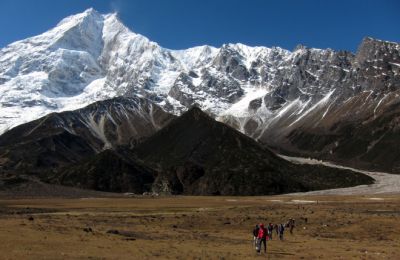
Manaslu Trek via Barpak and Laprak - 17 days
Manaslu Trek - 17 days is an off-beat trekking adventure with a fascinating cultural experience. Walk to the base of Manaslu, the eighth highest peak in the world.
Inquire Now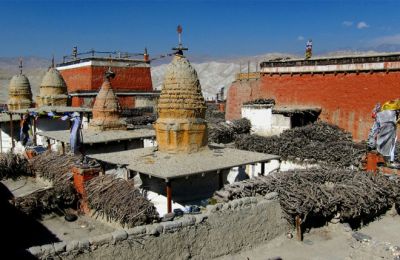
Upper Mustang Trek - 15 days
Upper Mustang Trek is a relatively new trek in Nepal as the region was opened to foreigners since 1992. Upper Mustang is culturally and geographically more similar to Tibet.
Inquire NowWhere to travel next?
Get help from our travel specialists for holiday ideas that matches your interests.
When To Go Trekking

Trekking in Nepal is generally good in all seasons because of the diversity in topography and climatic zones. In the Himalayan region, the weather changes drastically, so being aware of the best season for trekking is very important. Generally, the Autumn and Spring seasons are the best seasons for trekking in Nepal. However, in some lower altitude regions, the cold winter offers the best views, while in rain shadow areas, the rainy monsoon provides a great experience. Following are the facts about trekking in various seasons:
Trekking in Nepal in Winter
The Winter season in Nepal lasts from December to February and is off-season for trekking. As trekking in spring and autumn sees a flock of tourists each year, some tourists wish to trek in winter when they can enjoy the beauty of Nepal all to themself in serenity. The charm of winter is in snow-covered mountains and paths above 4,000m/ 13,123ft, clear blue skies, and the chilly mountain wind. Lower altitude treks below 3,000m/ 9,842ft in hilly regions are best during winter. The climate is pleasant, and the temperature can go from 5 degrees Celsius and drop to -18 degrees Celsius. Khopra Danda Trek, Poon Hill Trek are some of the famous winter treks in Nepal.
Trekking in Nepal in Summer
Summer lasts from June to mid-September in Nepal and is called the monsoon or wet season. Monsoon unleashes heavy rainfall in most parts of the hilly and Terai region, disrupting roads and causing landslides in July and August. Trekking in the Himalayan region is tough as the tea houses and lodges are mostly closed due to landslides. Hence, Summer is not the ideal trekking season. However, Trans Himalayan regions like Upper Mustang, Limi, and Dolpo in the west are rain shadow areas that do not witness rainfall. Hence, trekking in these areas is more famous during summer.
Trekking in Nepal in Autumn
In Nepal, autumn lasts from Mid- September to November. It is regarded as the best season for trekking in Nepal because the skies are clear with no rainfall. It is also the best time for flowers to bloom, and the farming lands are green. In the Himalayan region, the temperature is chilly but not as cold as in winter. The views of the mountains are clear under the bright blue sky, enhancing the beauty of Nepal.
Trekking in Nepal in Autumn is best in regions like Annapurna, Langtang, and Everest. Moreover, major Nepalese festivals like Dashain and Tihar fall in this season. It offers a glance into the religion and culture prevailing in Nepal.
The popular and classic trails can be overcrowded during this peak season, so you should pre-plan and organize.
Trekking in Nepal in Spring
Spring in Nepal falls from March to May, which is another best trekking season. The lowlands of Nepal are not too hot and humid, with just enough cool breeze. The hills are pleasant, with rhododendrons and wildflowers blooming lush and beautiful. The Himalayas have snow clinging on without bone-chilling winds, making it a perfect time to trek in all regions. Spring is indeed best to witness the true beauty of Nepal with ease. Being a peak season for trekking, the famous trails, however, may be crowded.
FAQ About Trekking In Nepal
1. Can I do Solo Trekking in Nepal?
Solo trekking is when you go on a trek alone to your desired destination. Solo trekking is a viable option for classic, well-developed, and popular trails like Annapurna Base Camp, Ghorepani, and Everest Base Camp. The benefits of solo trekking are interacting with strangers, understanding yourself, and exploring nature at peace.
Solo trekking is difficult in restricted areas of remote Nepal due to security issues. Regions like Dolpo, Upper Mustang, Kanchenjunga, and some areas of Annapurna like Nar Phu valley and Manaslu Tsum valley are restricted areas. Here you cannot trek alone and would require to issue restricted area permits for two or more people. Hiring a guide or porter for these areas is best if you are not with a group. However, if you are adamant about going on a solo trek, you can issue 2 restricted area permits, and your travel agency will manage the rest for you.
2. Can you trek in Nepal without a guide?
Yes, you can trek on some routes of Nepal without a guide, except in restricted areas. It is ideal only if you are familiar with the trekking region, it is an easy route, and there are many tea houses. If you are new to Nepal, for most treks, it is best to hire a guide. Guides are useful to give knowledge, resourcefulness and share their expertise.
3. How to prepare for trekking in Nepal?
It is best to make plans and preparations before embarking on your journey to the Himalayan land of Nepal. Following are some of the ways how you can prepare before the trek:
- In-depth research about the trekking region, itinerary, terrain, people, and best tour operators
- Regular exercise like running, cycling, jogging, and/or swimming two weeks before your trek
- Avoid consuming junk food and maintain your diet
- To keep up your stamina, avoid drinking alcohol and cigarettes
- Practice by taking a mini hike or easy trek before taking a difficult to challenge trek
4. Is it safe to trek in Nepal?
Nepal is a safe place for trekking and other outdoor activities. Nepal has a low rate of serious crimes, so it is safe to travel in that aspect. Moreover, tourists are greeted with love and respect by the humble people residing here. Political strikes do occur, but there is a safe passage and priority to tourists in these conditions. There are chances of some accidents in higher altitudes like altitude sickness, snow blizzards, and avalanches. However, with the proper care and support of your tour operator, you can avoid this.
5. What are some basic tips for trekking in Nepal?
Nepal is a country with diverse terrains and cultures integrated with a small landlocked mass. You will encounter different experiences in city life and rural areas. Hence you need to be prepared. Some basic tips for trekking in Nepal are:
- Carry a sturdy stick or walking pole for ease
- Make sure that your hiking boots are neither under nor overfitting
- Always carry some snacks, energy bars, and water with your
- Carry extra local currency (cash) with you as ATMs may not be easily available in rural areas
- Respect the culture, traditions, and customs of the locals
- Ask before taking any pictures of locals
- Give way to the domestic animals carrying luggage along the way
- Trek with a guide and porter for ease of finding accommodation and reduce the burden of carrying heavy luggage
Conclusion
Nepal is a beautiful country with lush nature and unique culture. Trekking is one of the fascinating ways to explore the beauty of this geographically diverse country. Different trekking regions range from east to west across foothills and the Himalayas. With the uniqueness and remoteness of many of the treks, proper research is required before travel. With adequate research, the support of your tour operator, and ample precautions, trekking in Nepal can be the best outdoor experience.
For your next exciting journey, embark on a once-in-a-lifetime adventure to the Himalayan land of Nepal.
- Written by: Naba Raj Amgai
Updated: Jan, 25, 2023

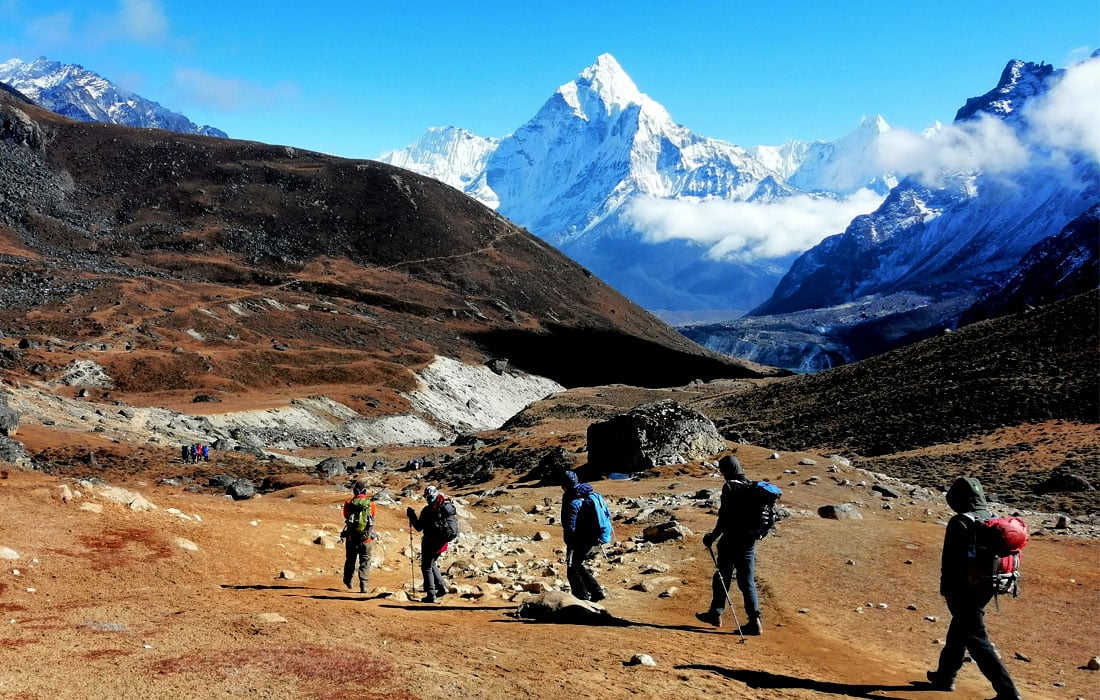

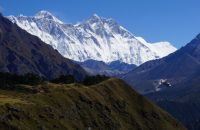
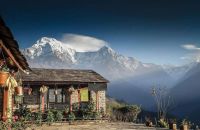
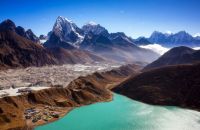
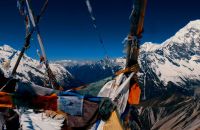
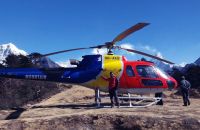
















Recent Comments
My friend said, she went for a Everest High Passes Trek without the help of local agency and got into serious trouble during the trip. Listening to her, I would definitely choose to go with reputed agency in Nepal. Actually Nepal is paradise to any nature and trekking lovers with so many regions and trails to walk.